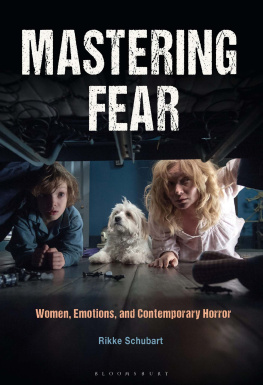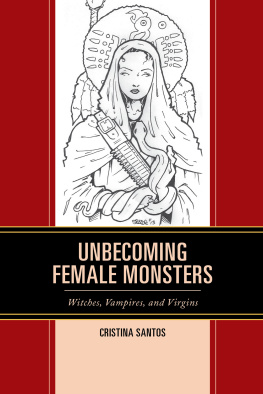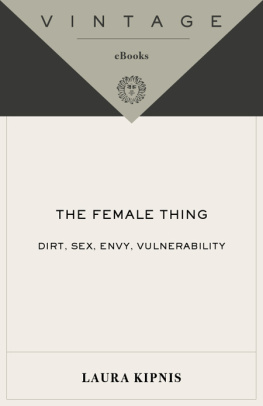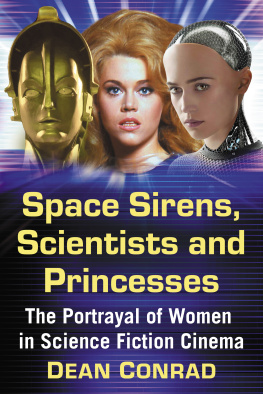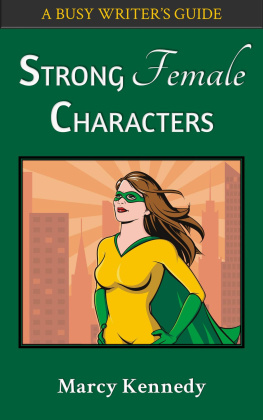Super Bitches and
Action Babes
The Female Hero in
Popular Cinema,
19702006
RIKKE SCHUBART
McFarland & Company, Inc., Publishers
Jefferson, North Carolina, and London
Table of Contents
PART ONE: THE RISE AGAINST MEN
PART TWO: FROM THE MARGINS
PART THREE: INTO THE ACTION
PART FOUR: AGE OF AMBIVALENCE
LIBRARY OF CONGRESS CATALOGUING-IN-PUBLICATION DATA
Schubart, Rikke.
Super bitches and action babes : the female hero in popular cinema, 19702006 / Rikke Schubart.
p. cm.
Filmography: p.
Includes bibliographical references and index.
ISBN-13: 978-0-7864-2924-0
1.Women heroes in motion pictures.I.Title.
PN1995.9.W6S363 2007
791.43'652dc22 2007005283
British Library cataloguing data are available
2007 Rikke Schubart. All rights reserved
No part of this book may be reproduced or transmitted in any form or by any means, electronic or mechanical, including photocopying or recording, or by any information storage and retrieval system, without permission in writing from the publisher.
Cover photograph: Pamela Anderson as Barbara Kopetski in Barb Wire, 1996 (PolyGram)
McFarland & Company, Inc., Publishers
Box 611, Jefferson, North Carolina 28640
www.mcfarlandpub.com
Acknowledgments
I want to first thank the Danish Research Council for the Humanities for their one-and-a-half-year grant, which made it possible for me to write this book. Thanks also to the University of Southern Denmark for funding the illustrations.
I was fortunate to meet my friend and Norwegian colleague Anne Gjelsvik, who commented on every part of the book in its first, second, and third drafts. My work has benefited immensely from her keen eye for detail, her patience, and generous friendship. Another friend is Nicolas Barbano, who has been my guide in the area of extraordinary (some would say trashy) films. I must credit my film taste to his influence. Colleagues at the University of Southern Denmark have read, commented on, and helped me throughout the writing process, among them Heidi Philipsen, Bo Kampmann Walther, Pia Harritz, and Lotte Nyboe. Another group of people, whom I cannot name individually since they are so many, are my wonderful students. They are unaware that I learn as much from them as they from me. Discussing my female heroes with them has kept me in touch with a changing reality. Also thanks to Ren Kimose, Lars Jakobsen, Gunnar Albjerg, and Martin Gotfredsen, whose technical help made it possible for me to watch films and access information on my laptop.
Finally, my family has shared the pleasures of meeting super bitches and action babes and the frustrations of late night writings. Ditte and Rasmus, I cherish every moment we spent together at the cinema! And to MartinI know it takes a man like you to love a woman like me. My debt is growing.
Preface
As I write this preface, I realize with a sting of regret that my journey has come to an end. Over the last six years I have explored the vast and, to me, unknown territory of the female hero in popular cinema. As I scaled mountains to discover hidden highlands, dragged my feet through swamps and fell down unexpected chasms, my hardships were rewarded with the company of black super bitches and brave Amazons, Chinese wonder women with thunderbolt kicks, expert Japanese female samurais, evil dominatrixes, hysterical virgins, bad mammas, sweet angels, and killer brides. The female hero is all of this and more. I call her female hero and not heroine because the figure I set out to find is a woman who enters a mans world and plays the hero in male genres: action films, adventure films, martial arts films, war films, science fiction films, all genres with male heroes, male audiences, and male producers. Well, not anymore. As gender changes, everything in the plot changes, and I identify five female archetypes in this book: the dominatrix, the Amazon, the daughter, the mother, and the rape-avenger. Archetyping the hero both absorbs and adjusts to social change, allowing her agency as well as limiting her action.
The seed for my journey was planted in 1996 when I discovered American actresses Pam Grier and Cynthia Rothrock during research for my Ph.D. dissertation on American action cinema. As Pam castrated bad guys and bottled their private parts, and Cynthia performed her martial arts in more than thirty films despite Hollywoods rejection of her, I wondered why I had not heard of these women. Where were their sisters? Why didnt women know their films (as I discovered many men did)? Why had their history not been written? Apart from the rare article and Yvonne Taskers groundbreaking Spectacular Bodies: Gender, Genre and the Action Cinema (1993), the subject of strong women was almost uncharted. As I received a one-and-a-half-year grant from the Danish Research Council for the Humanities in 2000, I set out to write an in-depth study of the female heros evolution across different national cinemas and genres, exploring her composite nature as both sexualized spectacle and active hero, and her ambivalent appeal to a female audience.
When I visited the Margaret Herrick Library in Los Angeles, the Hong Kong Film Archive in Hong Kong and the National Film Center in Kyobashi, Tokyo, looking for films, reviews, press material and earlier research, it became clear that the female hero was ignored in her low-budget appearances. One reason might be the element of sexual exploitation: When Grier, dressed in torn clothes revealing a breast, points her shotgun, and when a busty Dyanne Thorne as Ilsa tortures naked men and women, this is pure Mulveyan use of woman as sexualized spectacle and object of a male sadistic gaze. So, of course, is the nudge-nudge, wink-wink costuming of todays protagonists as erotic dancers and dominatrixes in mainstream films like Charlies Angels: Full Throttle (2003) and Mr. and Mrs. Smith (2005).
This clash of abuse and female agency is the central dilemma of the female hero, who is what I call in-between. As much as I share feminisms cause, I accept living in a world of ambivalence and contradiction where I compose my self with bits and pieces from the culture I consume. I identify with Grier shooting a cheating boyfriend in the crotch in Coffy (1973), and with Geena Davis and Demi Moore, respectively, yelling, Suck my dick! in The Long Kiss Goodnight (1996) and G.I. Jane (1997) when they have had enough. To ignore such pleasure is to negate politically incorrect desires and wrong objects of pleasure. Where feminism is utopian, postfeminism is pragmatic: if we want to influence societys gender roles, we must get in the ring and join the fight. It might turn out men are not the enemy, but merely an opponent.
As I prepared for my journey, the territory started to expand. The television series Xena: Warrior Princess (19952001) was followed by shows like La Femme Nikita, Buffy the Vampire Slayer, Witchblade and Alias. What had been the occasional mainstream film with a female hero, like Alien (1986) and Terminator 2: Judgment Day (1992), in the late nineties became a box office trend culminating with the Charlies Angels and Lara Croft franchises and Quentin Tarantinos Kill BillVol. 1 and Kill Bill Vol.2 in 2003 and 2004. Suddenly, female heroes were everywhere. I cannot claim discovery of any new land, as others have been here before and several overtook me on the way. Yvonne Taskers


